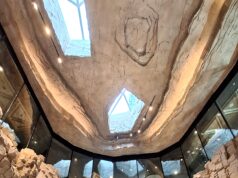CLARK FREEPORT – Amid growing opposition to reclaim lands in Manila Bay, Pampanga 1st District Rep. Joseller Guiao has offered an alternative: go inland instead and fully develop this freeport.
In a forum with the Capampangans in Media, Inc. (CAMI), Guiao lamented the reclamation plans at Manila Bay, pointing out that “recent disasters wrought by climate change worldwide point to how untenable the reclamation at Manila Bay can be.
“What happened to Tacloban City during Supertyphoon Yolanda should make planners think about projects laid out before the world has finally admitted the devastating effects of climate change,” Guiao said.
“The development should be pursued inland, here at Clark,” he stressed. Similar sentiment was issued recently by the Pampanga Chamber of Commerce and Industry, Inc. (PamCham) which appealed to the government to take seriously proposals to decongest Metro Manila to spread out national assets. PamCham chairman emeritus Levy Laus aired the call in line with his groups’s advocacy titled “Decongest Metro Manila for the Country’s Sake.”
Laus said that the government should seriously consider “spreading financial and vital government installations outside Metro Manila to ensure that the country and its government will continue to function should a disaster strike the very heart of Metro Manila.”
“It is like putting all the eggs in one basket,” Laus said referring to the concentration of economic and government resources in the metropolis. Even much earlier, starting sometime in 1993, is the Pinoy Gumising Ka Movement in its advocacy to “de-imperialize Manila” with the “full operationalization of the Clark International Airport as the country’s premier international gateway.”
The PGKM holds that CIA “serves as the fulcrum of development not only of Pampanga and Central Luzon but of all areas north of Metro Manila.“ Way back in 1994, then Pres. Ramos issued an executive order declaring Clark as “the future site of the country’s international gateway.”
Earlier, Dr. Kelvin Rodolfo, Environmental Sciences Professor at the University of Illinois, warned that land reclamation in Manila Bay would give rise to the danger of land subsidence, storm surges, storm waves and further ecological damage to coastal ecosystem. Environmental groups also had warned that the reclamation proposal would also block the natural pathways of the river system flowing into the bay and worsen flooding in Metro Manila.
This, even as Catholic bishops in dioceses near Manila Bay have asked the government to scrap plans for a 94,000- acre reclamation project. The Catholic News Service quoted Manila Auxiliary Bishop Bernardino Cortez as saying that “For us bishops, worried about the poor who are affected severely by floods, we see that stopping the reclamation is seriously needed,”.
In a letter to Pres. Aquino last Nov. 19, Cardinal Luis Tagle, head of the bishops of 12 dioceses based in the Manila, asked that the reclamation project be scrapped and the budget for it used instead to alleviate poverty and protect the environment.
In the letter, the bishops warned of “far-reaching” consequences of the reclamation project to the people of the provinces and cities which they minister to. In 1954, Manila Bay was designated by Malacanang as a national
park. In 1992, the bay was included in the National Integrated Protected Areas System Act, despite some areas already reclaimed. Other local regulations and resolutions also mandated the protection and preservation of the appearance of the bay.
However in 1992, a group called the Manila Goldcoast Development Corp., lobbied for approval to reclaim the Manila Bay waterfront along Roxas Boulevard, between the Cultural Center of the Philippines and the U.S. Embassy.




